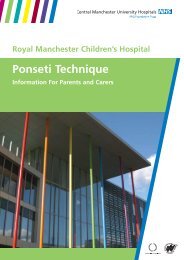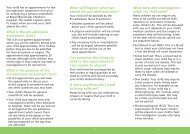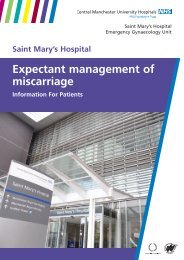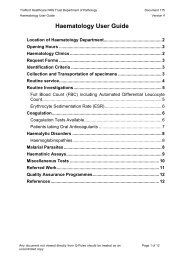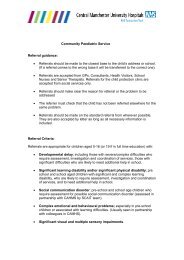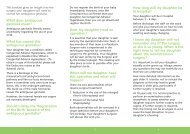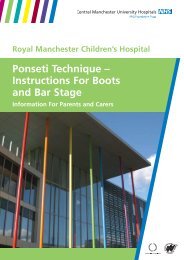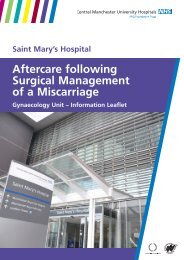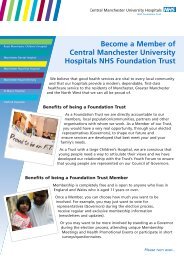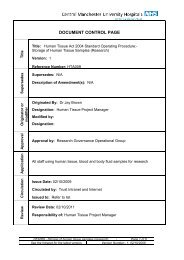Scoliosis
Scoliosis
Scoliosis
Create successful ePaper yourself
Turn your PDF publications into a flip-book with our unique Google optimized e-Paper software.
What causes scoliosis?<br />
Eighty percent of scoliosis is of unknown cause (idiopathic).<br />
Much research is being done into this field including work at<br />
the Royal Manchester Children’s Hospital. In most of these cases<br />
the condition develops in girls between 10 –15 years old and is<br />
more common in the relatives of those affected.<br />
Other cases are congenital (caused by abnormal development<br />
of the bones in the spine) and some are due to problems with<br />
nerves or muscles (such as cerebral palsy or muscular dystrophy).<br />
How is scoliosis detected?<br />
<strong>Scoliosis</strong> can be seen by a trained observer looking at a patient’s<br />
back. When a patient bends forward one side of the chest or<br />
loin may appear more prominent if scoliosis is present.<br />
Some education authorities screen all teenagers for scoliosis.<br />
If the school doctor has any doubts then an appointment is<br />
usually arranged at the scoliosis clinic for X-rays to be taken.<br />
Monitoring and progression of the curve<br />
Although some new photographic methods are now becoming<br />
available, X-rays are still the most reliable way of detecting any<br />
worsening in the degree of scoliosis.<br />
At the time of diagnosis there is no accurate way to predict<br />
which curves will worsen. Some smaller curves do not get<br />
worse. Many curves remain stable for years but suddenly get<br />
worse during the adolescent growth spurt. The child’s potential<br />
for growth is therefore one of the most important factors in<br />
predicting curve progression. In general, patients who have a<br />
lot of growth to come have a higher risk of curve progression.<br />
Growth potential, and therefore potential for curve<br />
progression, can be evaluated by age at diagnosis, menstrual<br />
history and radiological signs of bone maturity. Overall, females<br />
with scoliosis have a greater risk of curve progression.<br />
4






